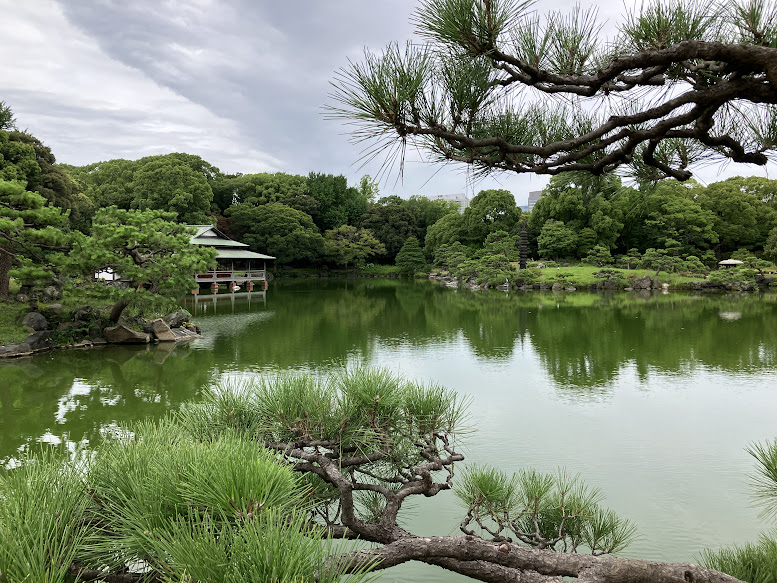Tokyo has more than 2000 temples and over 1000 shrines.
I highly recommend visiting one even if you’re not interested in religion.
It’s a great way to get a break from the chaos of the city, and you can get a glimpse of traditional Japanese culture and architecture.
Shrines and temples in Tokyo are usually free. They open early, so it’s a perfect place to visit if you’re jetlagged and looking for things to do in the moring.
Here are my top picks!
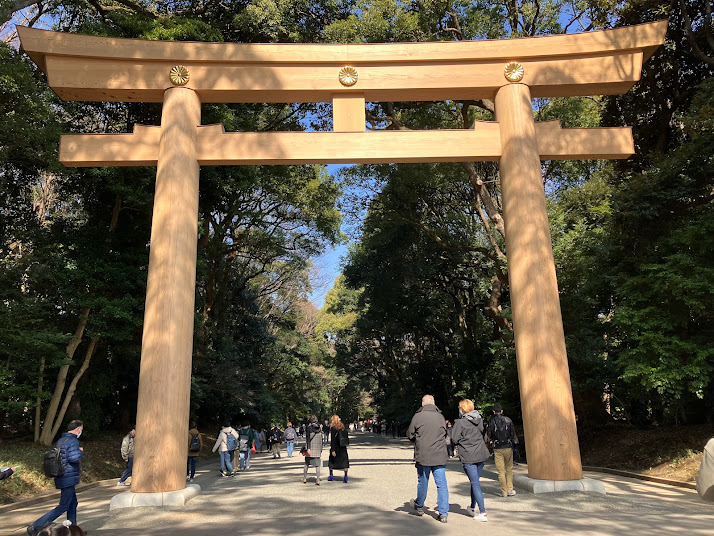
1. Meiji Jingu (Meiji Shrine)
-Shrine in a forest-
Meiji Jingu in Harajuku is one of the most famous shrines in Japan. It was built in 1920 to commemorate Emperor Meiji and Empress Shoken.
It’s notable for the 70 hectares of forest surrounding the shrine (that’s about 98 football fields!). The 100 year-old forest is man-made, but it’s turned into a naturally sustainable ecosystem over time.
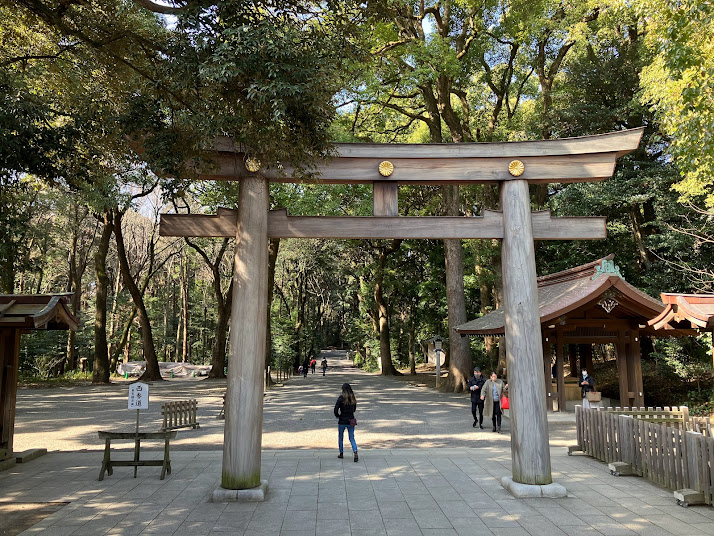
The shrine is located right next to Harajuku station, which is just one stop from Shibuya. Harajuku is one of the busiest areas in Tokyo, but walk towards Meiji Jingu and the city suddenly turns into a forest.
The walk from the main gate to the shrine is about 10-15 minutes.
You get fresh air, there are some amazing architectures, and you might even witness a traditional Japanese-style wedding (higher chance on weekends).
I come here when I miss nature and just want to have a refreshing walk.
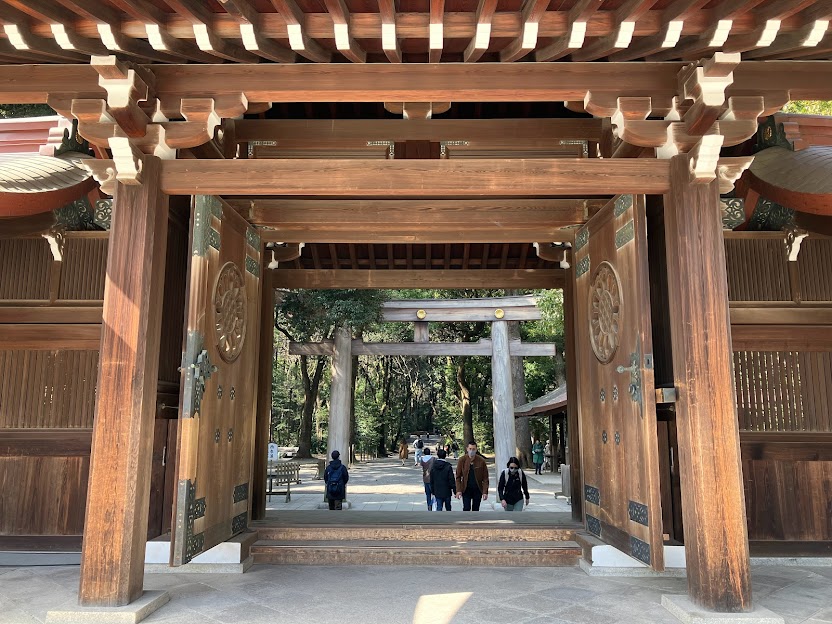
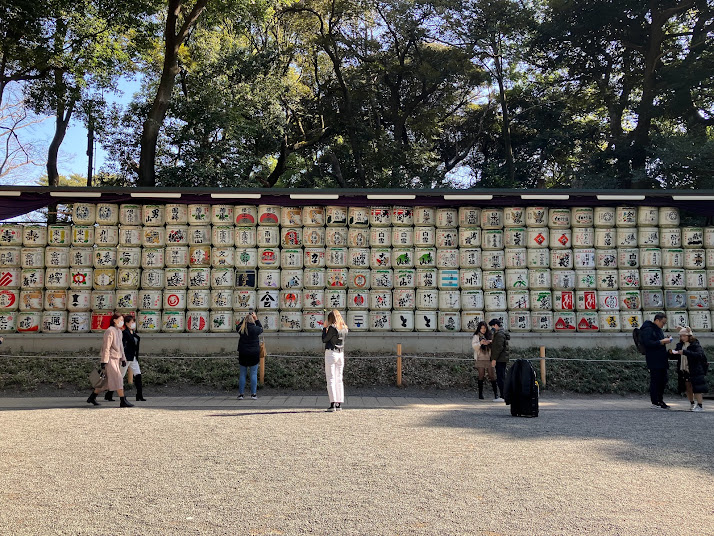
Location
* Meiji Jingu and Meiji Jingu Gaien are two different places. This one is Meiji Jingu.
- Harajuku Station (JR Yamanote Line), right next to the station
- Meiji-jingumae Station (Chiyoda Line), right next to the station
- Omote-sando Station (Chioyoda, Ginza & Hanzomon Line), 10 min walk
Hours: Seasonal. Usually opens around sunrise and closes before sunset. Check Google Maps
Time spent: 45min-1.5 Hr
Entrance Fee: Free!

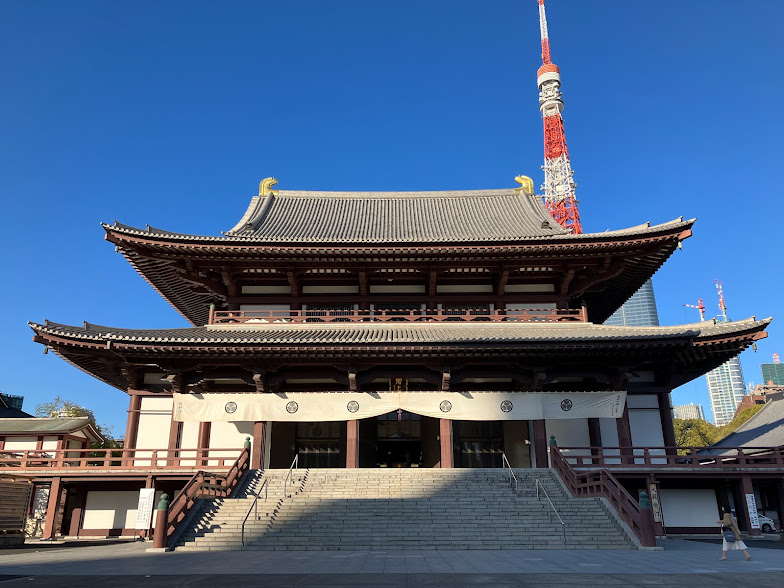
2. Zojo-ji Temple
-Temple next to Tokyo Tower-
Zojo-ji is one of the main temples of Jodo-shu (Jodo Buddhism) and is notable for it’s connection with the Tokugawa family. 6 of the 15 Tokugawa Shoguns are buried here.
Former Prime Minister Shizo Abe’s funeral was held here in 2022.
Besides it’s historical significance, Zojo-ji is famous for standing right next to the iconic Tokyo Tower. Very photogenic.
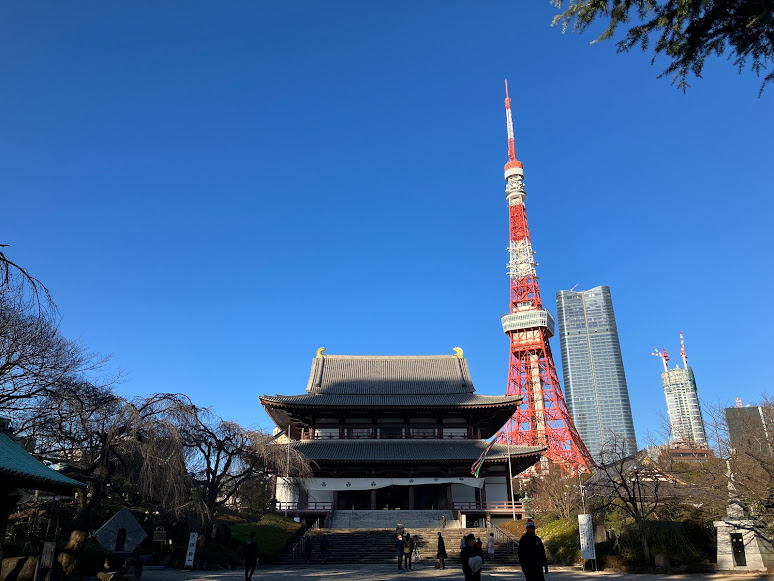
Inside the main temple is dark, calm and Zen. There’s Buddha statue and beautiful intricate golden decorations.
I recommend visiting this place in the morning. Japanese morning starts slow, so 9AM and the place is pretty much empty even on weekends. You can enjoy the quiet atmosphere all to yourself.
The place is not that big, so 15-30 minutes is all you need.
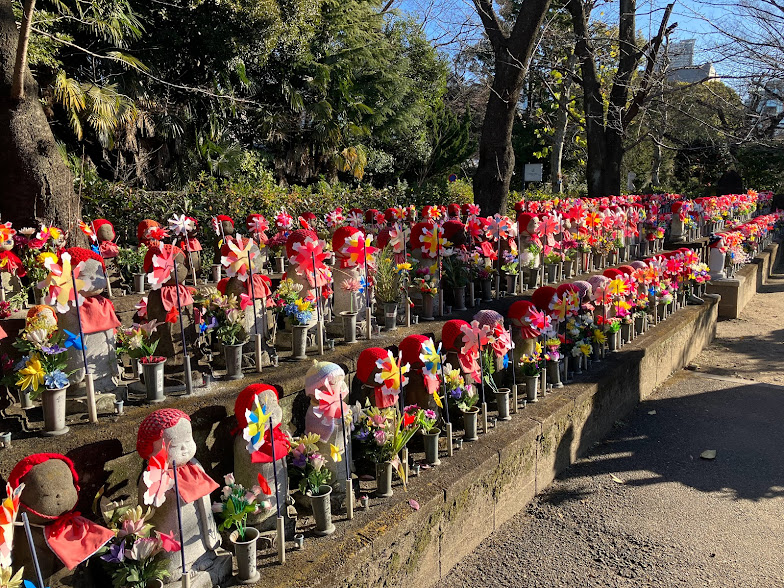
Location
- Shibakoen Station (Mita Line), 5 min walk
- Daimon Station (Asakusa & Oedo Line), 10 min walk
- Hamamatsucho Station (JR Yamanote & JR Keihin-Tohoku Line), 15 min walk
Hours:
- Temple 5:00AM-5:30PM, open everyday
- Tokugawa graves 11:00AM-3:00PM (Weekdays, closed on Tuesdays), 10:00AM-4:00PM (Sat, Sun, Holidays)
- Treasure gallery temporarily closed until Dec 2023
Time spent: 15-30 min
Entrance Fee: Free (¥500 for Tokugawa grave)
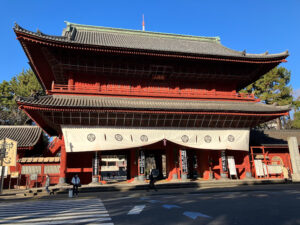
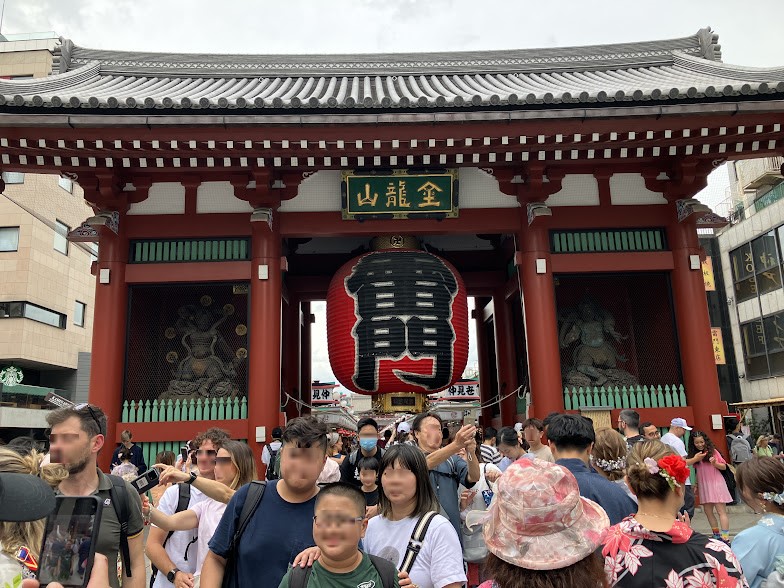
3. Senso-ji
-Asakusa Temple with Big Lantern and Market-
Senso-ji is a very popular tourist spot in Asakusa famous for it’s big lantern and market. It’s the oldest temple in Tokyo, and a colorful, fun place with street food and people in kimonos.
From the famous Kaminarimon Gate with the huge lantern, there’s a long strip of markets on the approach to the temple. The shops sell mostly street food and souvenirs. You can buy mochi, matcha ice cream, rice crackers, folding fans, chopsticks, etc. etc.
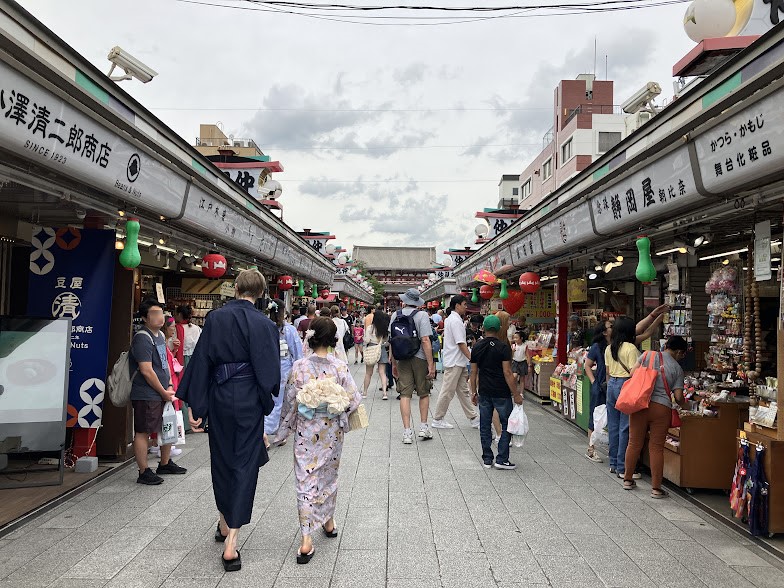
The place is packed even on weekdays.
I recommend going around 10AM when the shops start to open and before it gets too busy.
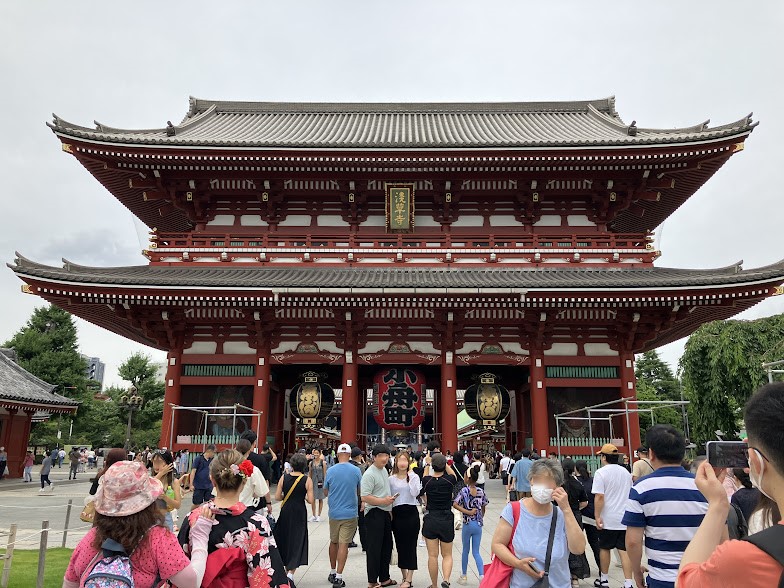
Street food and shopping are part of the experience, but if you absolutely want to avoid the crowd, try visiting when the markets are closed. Open hours vary, but most shops are open 10AM-6PM.
I personally like Senso-ji at night . The gate, the temple, and the five-story tower are all lit up until 11PM. You can take your time to appreciate the architectures and take photos.
Location
- Asakusa Station (Asakusa, Ginza & Tobu Skytree Line ), 2-5 min walk from A4 exit to Kaminarimon Gate
- Asakusa Station (Tukuba Express), 10 min walk
Hours:
- If just seeing the architectures, it’s open 24/7
- Temple 6:00 AM – 5:00 PM
- Light up: around sunset to 11PM
Time spent: 1-2 Hr
Entrance Fee: Free!
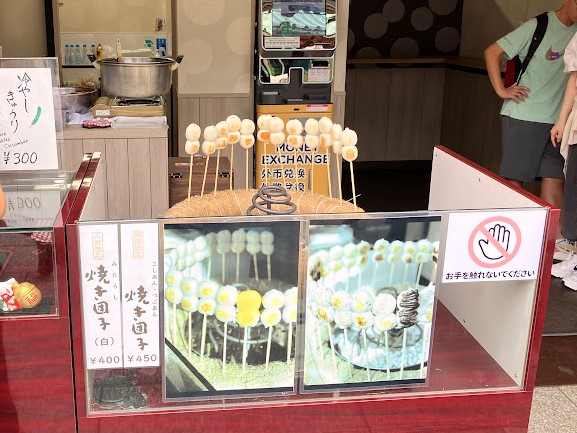
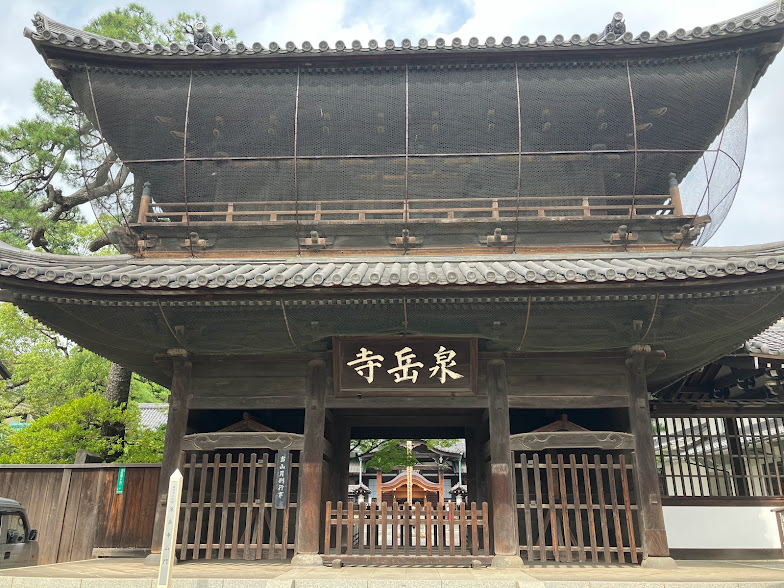
4. Sengaku-ji
-Grave of 47 Ronin-
Sengaku-ji is where the 47 ronins (Ako Gishi) are buried. If you’re into Japanese history, this might be an interesting temple to visit.
The story of the 47 ronin is also called Ako Incident or Chushingura. In a nutshell, 47 samurais avenged the death of their lord after planning and waiting for almost 2 years. All 47 of them were sentenced to seppuku (ritual suicide which was considered honorable death) for their crime of murder. The story was popularized and has been made into novels, movies and plays.

To visit the graves, you pay ¥300 and they will give you a bundle of incense. Place couple of incense to each grave to offer your prayer.
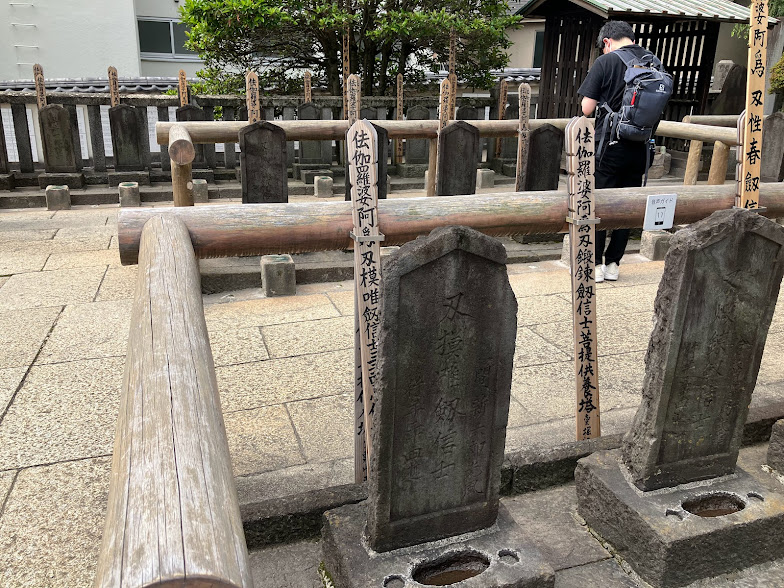
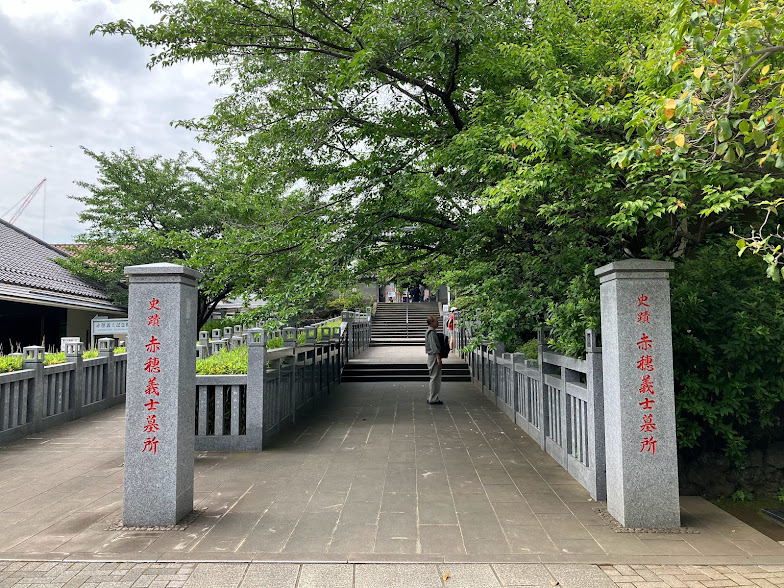
There’s also a well where the ronins washed Kira’s head before offering it to their lord’s grave.
If you’re interested in learning more about the history, Memorial Hall displays artifacts and records related to Ako Gishi.
Location
- Sengakuji Station (Asakusa Line), 5 min walk
- Takanawa Gateway Station (JR Yamanote & JR Keihin-Tohoku Line), 5-10 min walk
Hours:
- Temple and graves 7:00AM-5:00PM, open everyday
- Memorial Hall 9:00AM-4:00PM
Time spent: 30 min- 1 Hr
Entrance Fee: Free (¥300 for graves, ¥500 for Memorial Hall)
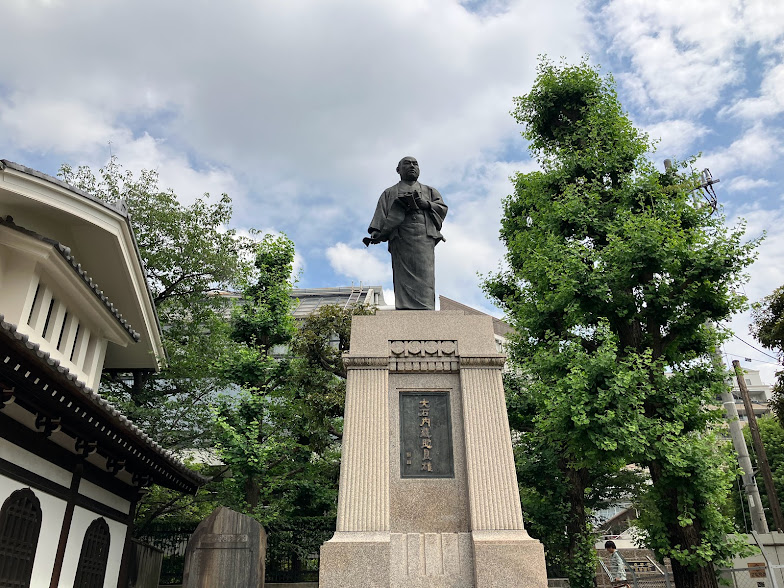
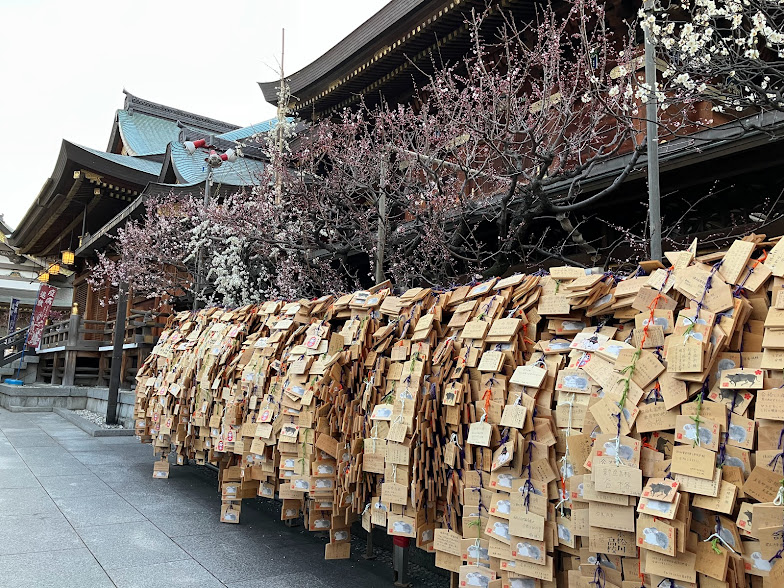
5. Yushima Tenjin Shrine (Yushima Tenmangu)
Yushima Tenjin Shrine is not big, but is well known for it’s association with god of academics.
If you’re staying in Ueno/Okachimachi area in January to April, this might be an interesting place to stop by.
Students from all over Japan visit Yushima Tenjin to pray during entrance exam season. They write their wishes on wooden plates called ema and the shrine is covered with these plates.
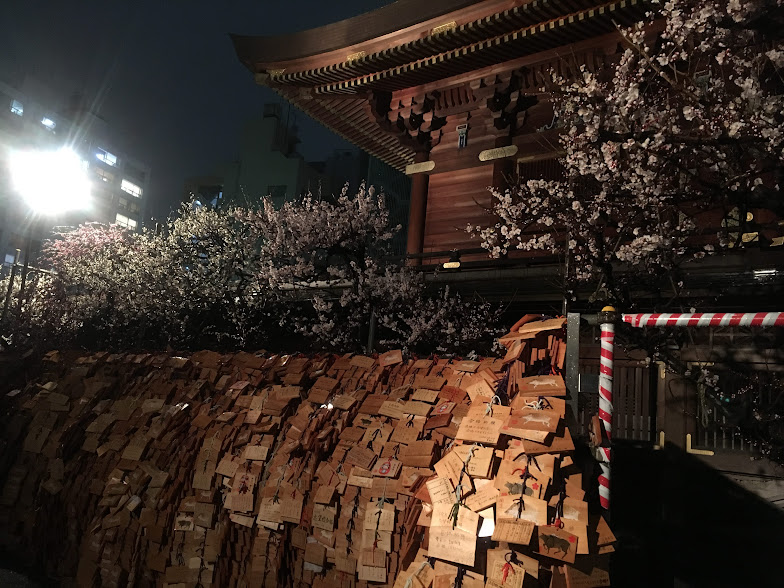
The shrine is also known for plum blossoms. If you visit in February, you’ll be able to witness both plum blossoms and ema.
Location
- Yushima Station (Chiyoda Line), 5 min walk
- Okachimachi Station (JR Yamanote & JR Keihin-Tohoku Line), Ueno-Hirokoji Station (Ginza Line), Ueno-okachimachi Station (Oedo Line), Naka-Okachimachi Station (Hibiya Line), 10-15 min walk
Hours: 6:00AM-8:00PM, open everyday
Time spent: 15-45 min
Entrance Fee: Free!
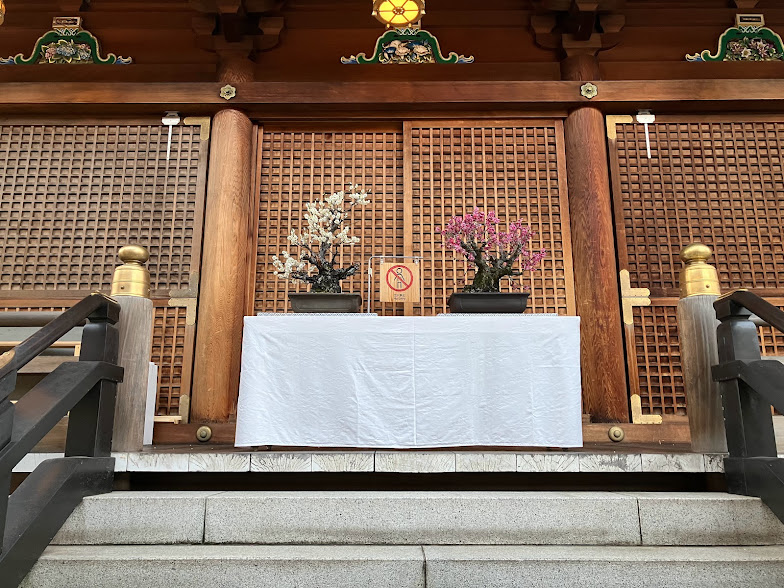
Visiting Temples and Shrines -Tips and Info.
1. Avoid New Year
Absolutely avoid going to shrines and temples between January 1st to 3rd. Or else…

This for HALF A MILE. Japanese visit shrines and temples to pray for the new year. You’ll be in line easily for 2 hours. Jan 1-3 is the worst, but it will stay busy until mid January.
2. Taking Pictures in Shrines and Temples
In most cases, it’s completely fine to take pictures within the premises if outside the buildings. Most temples and shrines don’t like you taking pictures inside the buildings. When in doubt, follow what everyone else is doing.
3. Go Early
When friends visit from the US, they’re usually jet-lagged and wake up very early. But Japanese mornings start late, so there’s not much you can do before 10AM.
Shrines and temples open around 6-7AM. Some are open 24/7. If you’re fine with skipping the shops, early morning is the best time to visit.
4. Shrine vs Temple
Shrine is Shinto and temple is Buddhist. They’re different religions but both happily coexist in Japan. For most Japanese, it doesn’t really matter which one it is.
Shrines usually have torii gates and are of wood architecture. You might see fox statues.
Temples have Buddha statue and graves.
4. Dress Code
I don’t think there is any. At least for the ones mentioned here.
Major temples and shrines in Tokyo are generally not that strict.
5. Temple and Shrine Etiquette
Again, Tokyo’s shrines and temples are not strict. You can just visit one without any preparation.
There are general rules/routines that an average Japanese would follow when visiting a temple/shrine. If interested, please read related post.
6. Fortune telling Omikuji
Buying omikuji (fortune telling strips) at temples/shrines is popular among locals.
They’re usually sold at shops near the main temple where good luck charms are sold too. You stick your hand inside a box of omikuji and pull one out, or you shake a box with numbered sticks and pull one out. Most places now have English ones. They’re usually 100 or 200 yen.

